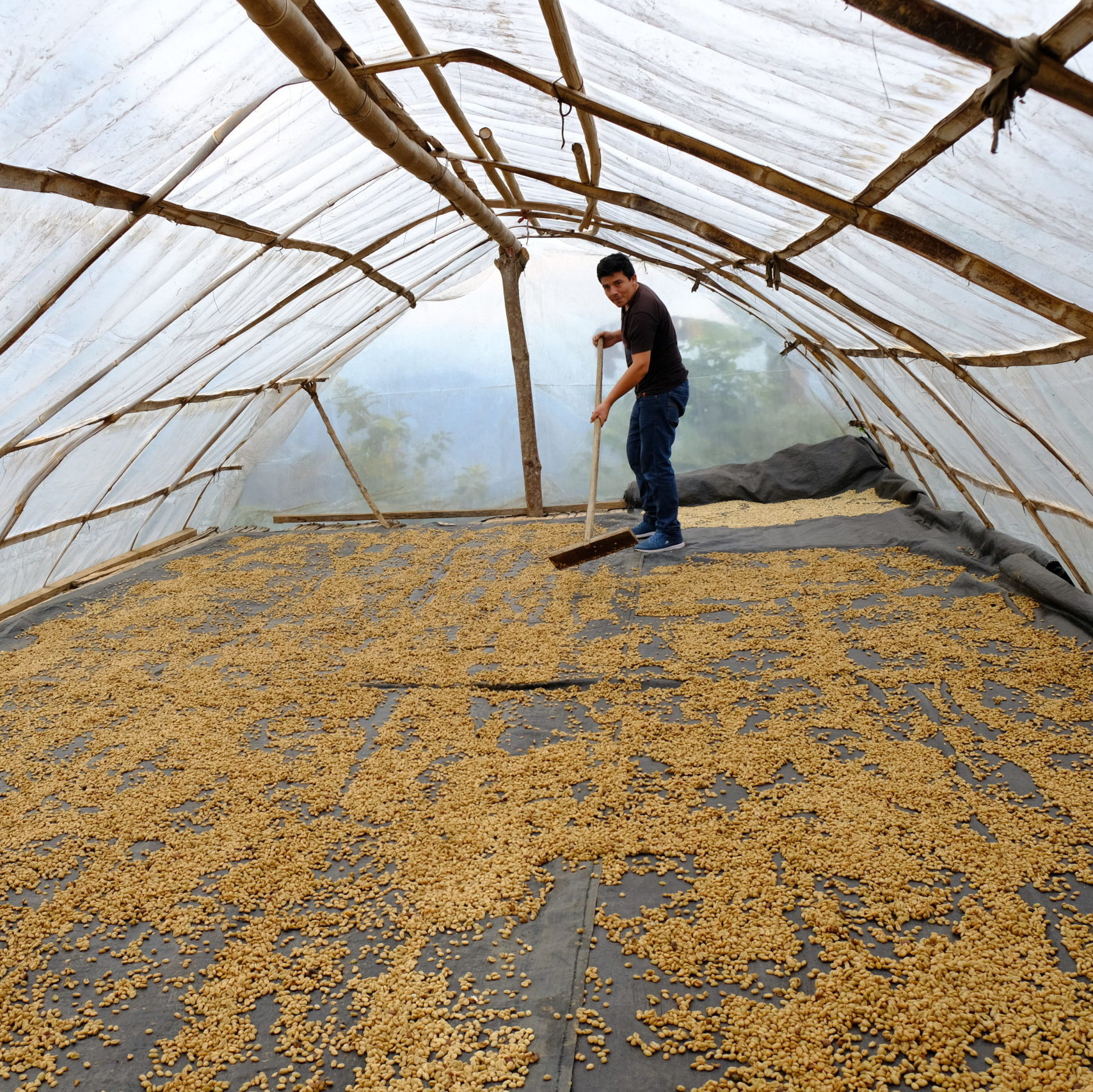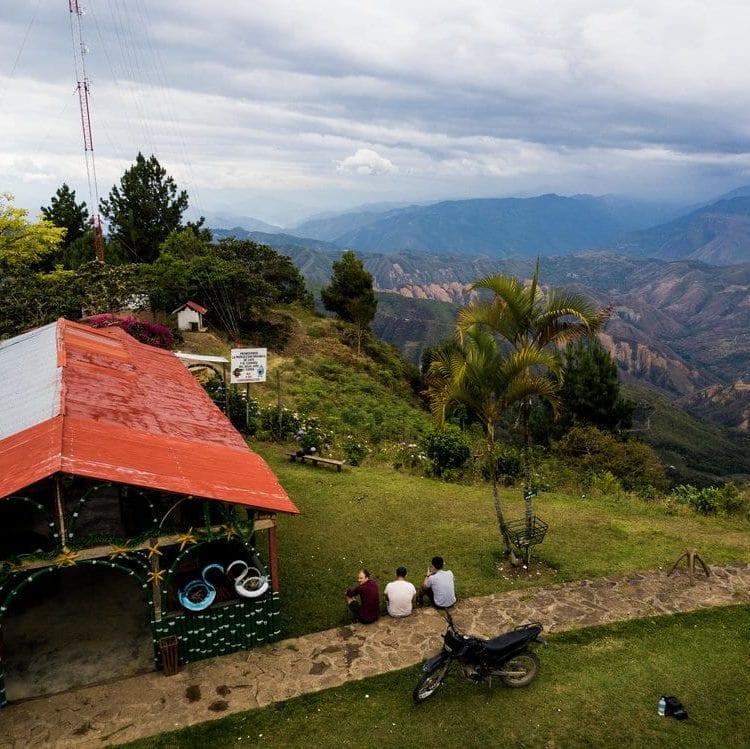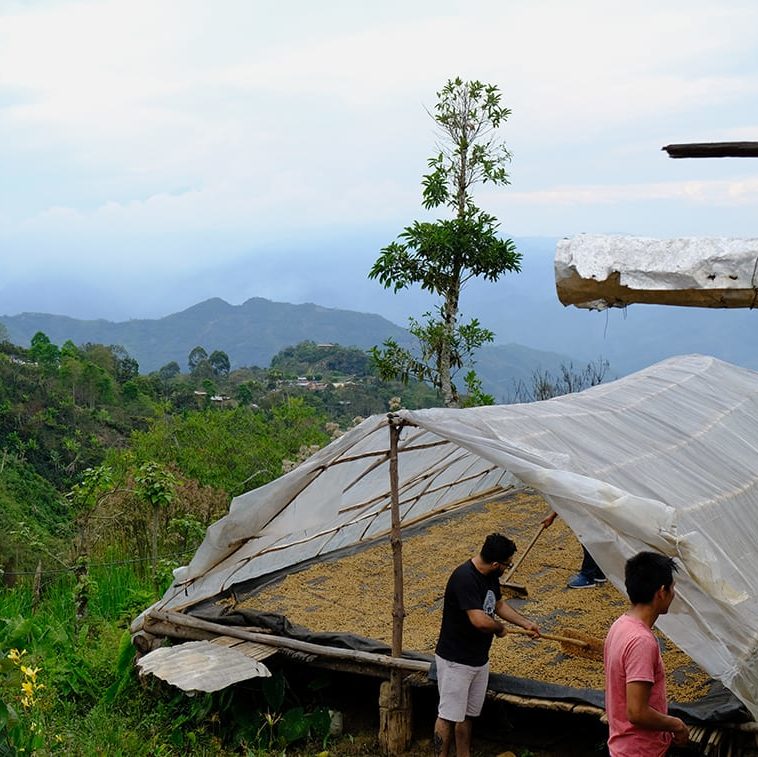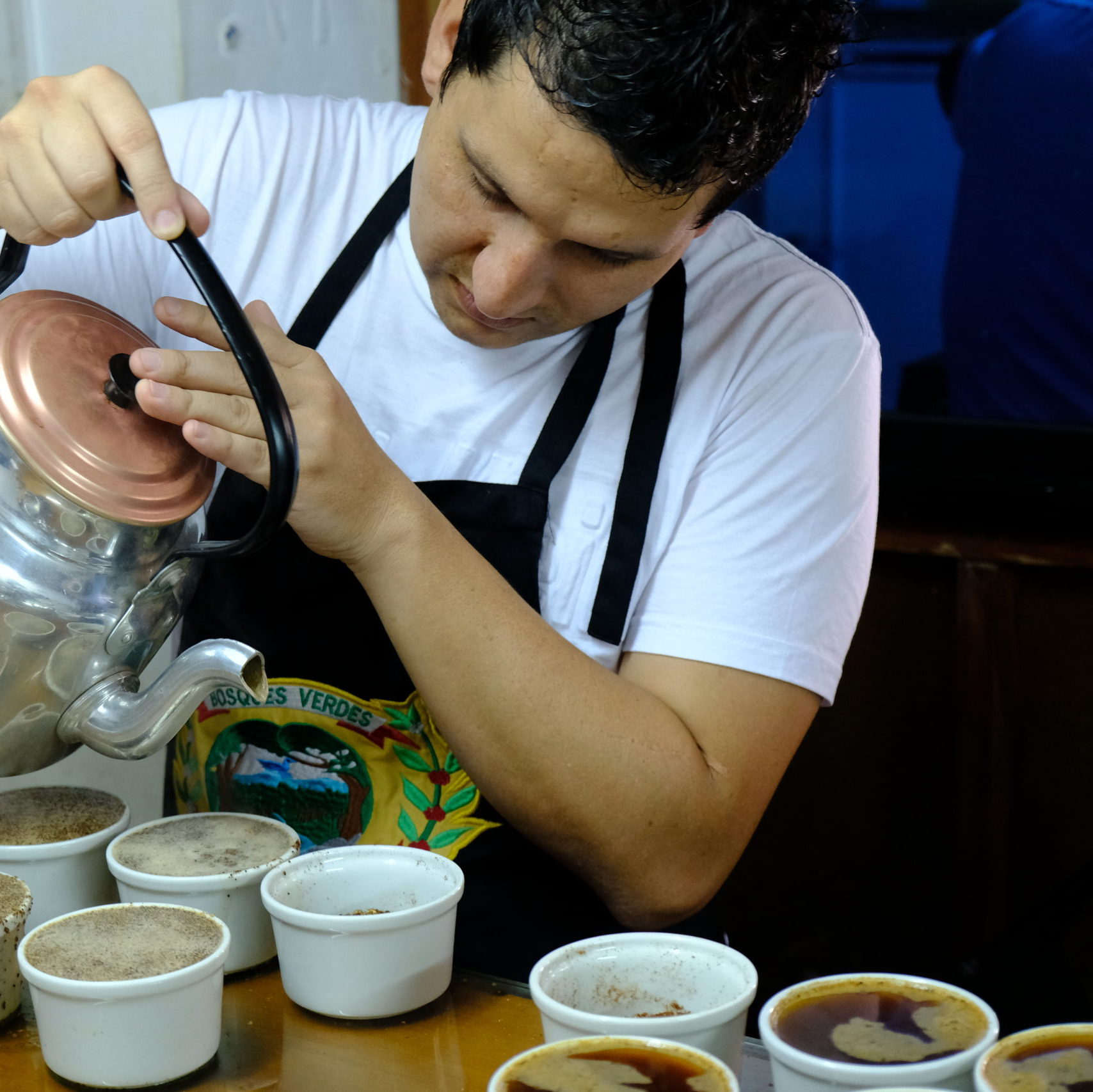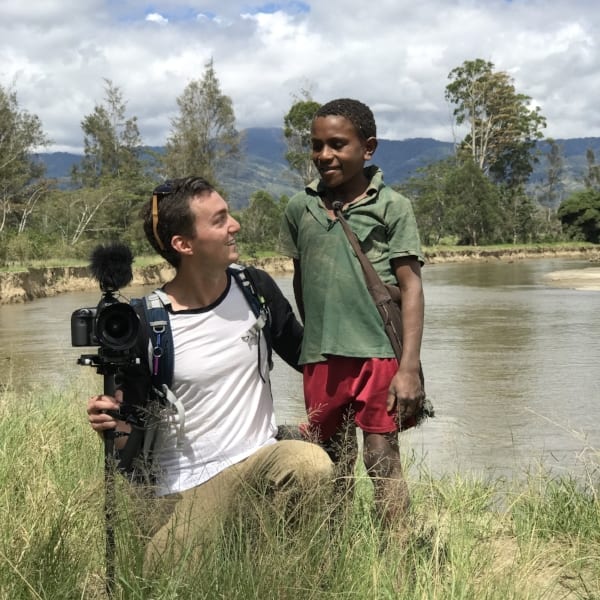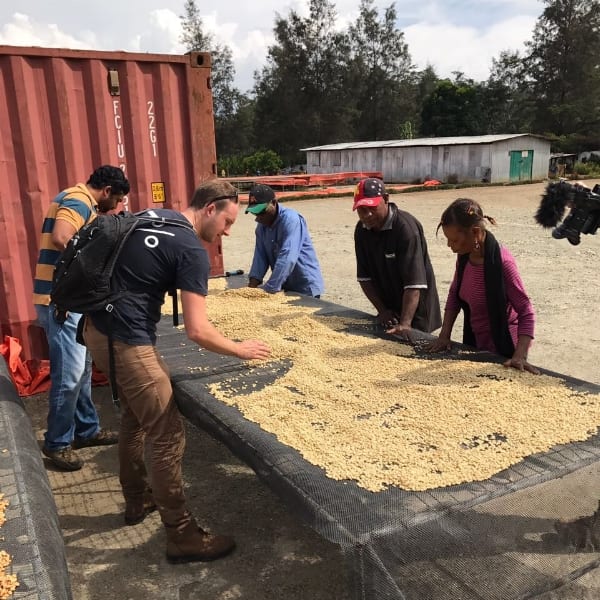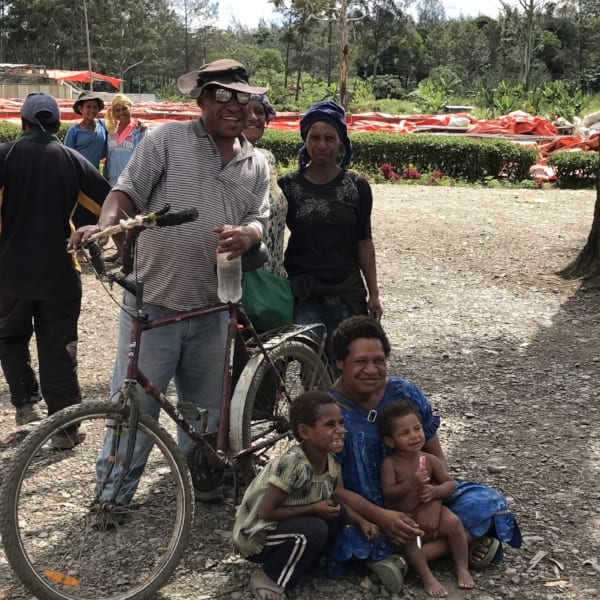Our Projects
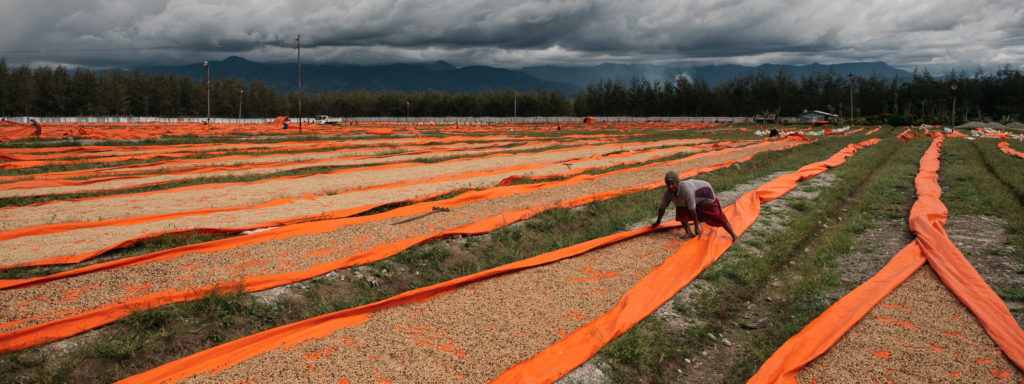
THERE IS NOTHING ZEST LOVES MORE THAN WORKING ON THE FARM. KEEN TO LEARN THROUGH DOING. CURIOUS ABOUT DEVELOPING FLAVOUR TECHNIQUES THAT ADD VALUE AND LIFT PRODUCT VALUE FOR THE PRODUCER. FERMENTATION. PROCESSING METHODS. ALWAYS LEARNING. ALWAYS EXPLORING. ZEST ADDS VALUE TO FARMERS THROUGH KNOWLEDGE SHARING AND EXPERIMENTATION. DRIVEN BY OUR FASCINATION WITH FLAVOUR.
OUR GOAL IS TO IMPROVE THE LIVES OF COFFEE WORKERS AND THEIR FAMILIES, TO INNOVATE IN PROCESSING AND EXPLORE FERMENTATION. TO EDUCATE, TO SHARE KNOWLEDGE AND EXPERIENCE, GIVING BACK TO THESE AMAZING COMMUNITIES.
To date our journeys have taken us to fascinating origins, the four corners of the earth, including Costa Rica, Jamaica, Ethiopia, China, Papua New Guinea, Sumatra and, most recently, Peru.
These have been missions of flavour creation, collaborating with our direct trade partners, to work at farm level exploring fermentation and processing techniques. Our goal is to improve the lives of coffee workers and farmers, innovate with processing, educate and give back to the community.
Fermentation is an opportunity to impart flavours and complexity into what would otherwise be sold as commodity coffee. We seek to create flavours that would otherwise not have existed and in so doing enable farmers and co-ops to sell their lots at a premium.
DRAG RIGHT TO READ MORE >>
WE CHOSE TO HELP PERUVIAN FARMERS TO ASSIST THEM IN OVERCOMING THE HOST OF CHALLENGES TO THEIR SUCCESS, AND TO CHARTER A VIABLE PATH TO SUSTAINABLE QUALITY.
Our learnings as a partner to many in the coffee industry. From tips to improve your extraction through to improving your profitability efficiency as a business; we have collated them all into some succinct and helpful articles for you to peruse.
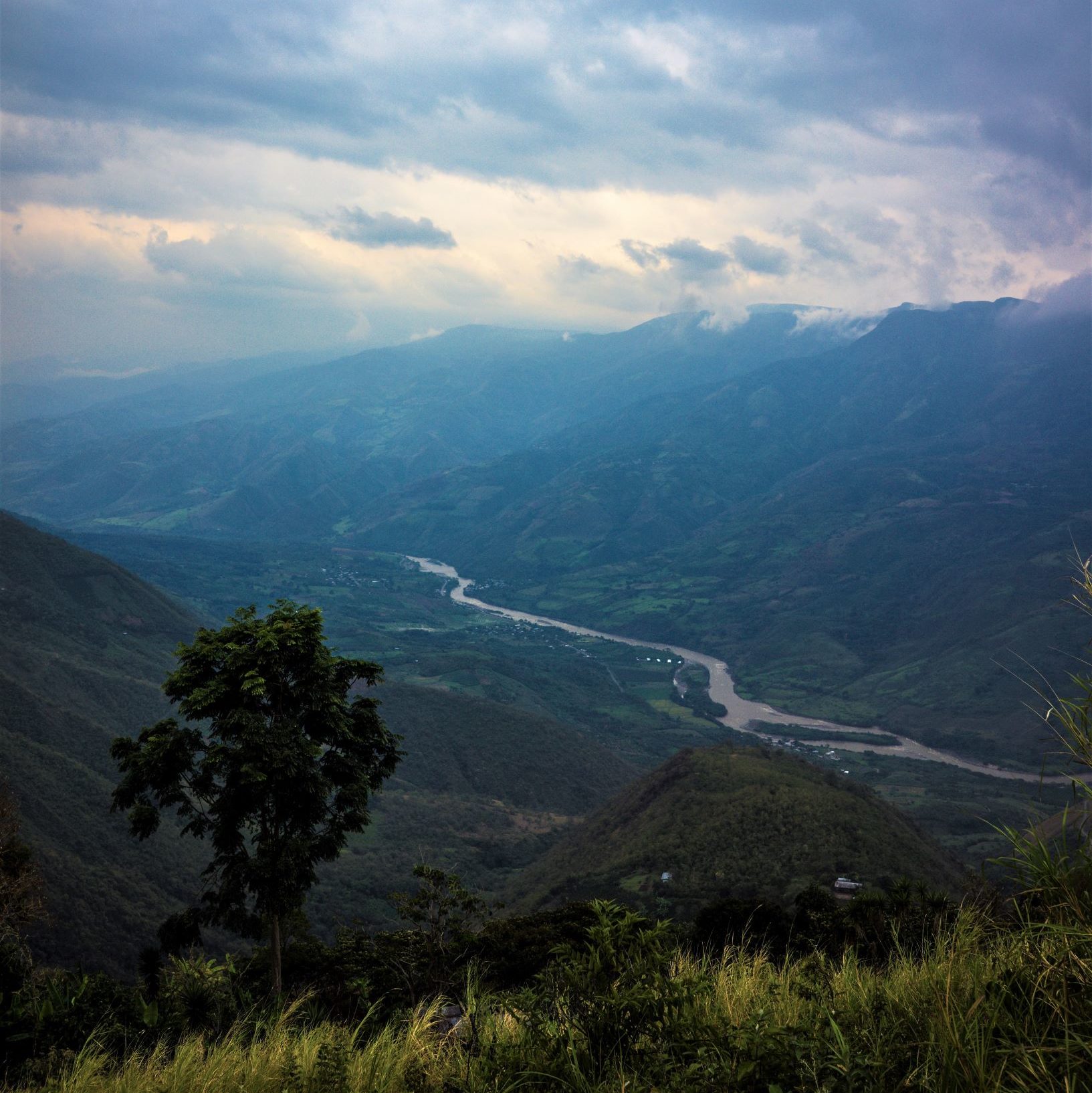
MISSION
Through our journeys to origin, Zest has played an integral role in experimental coffee processing methods – working as a mediator between sustainable coffee farming and meaningful cafe relationships. We share knowledge and resources with farming communities and fully engage in the work they are doing.
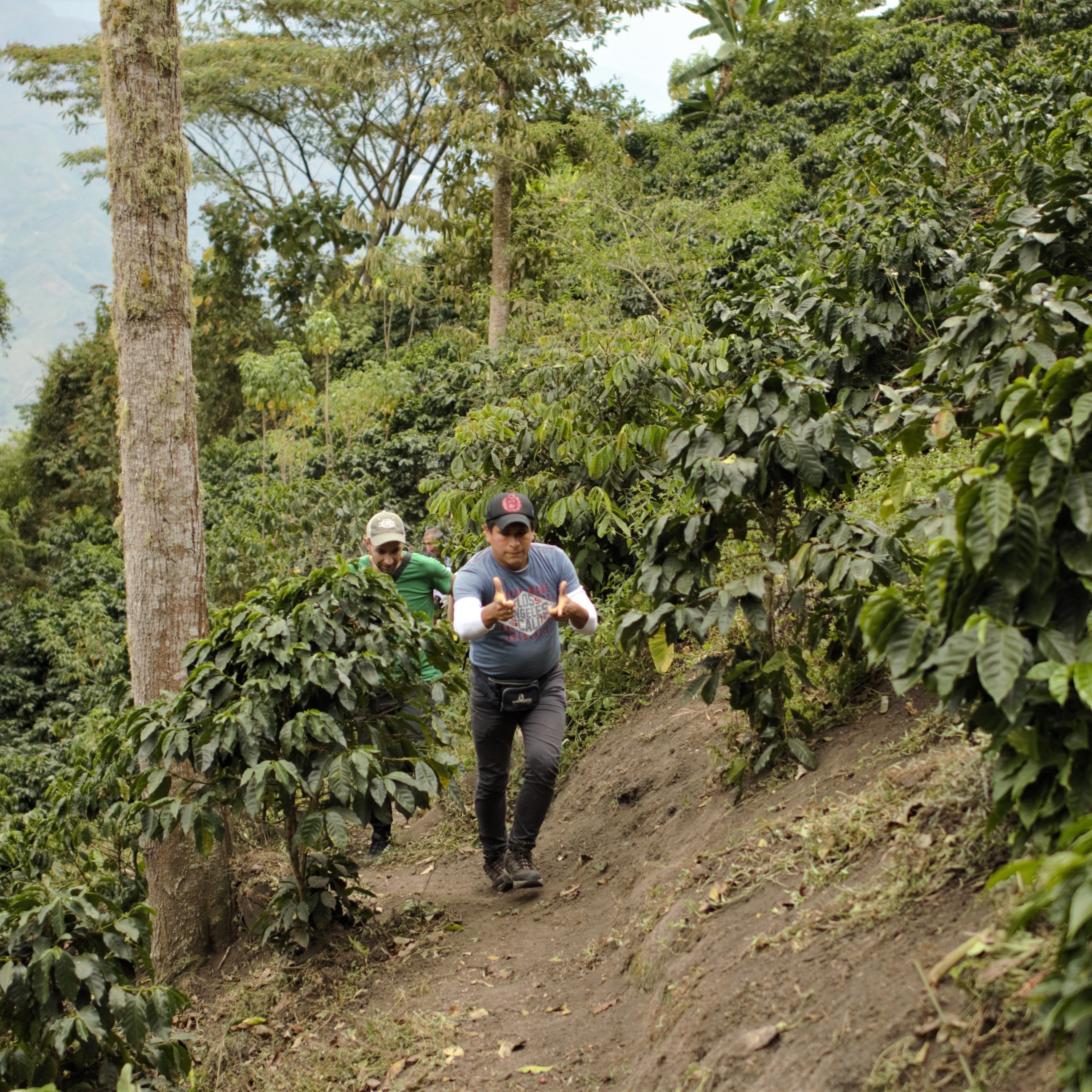
ORIGIN PERU
In 2019, our journey took us up steep, winding tracks to the mountain-top farm of Jose Don Nolasco, a small coffee farmer from the northern region of Peru. The project began before we left Australia with the donation of over 130m2 of raised drying beds and three 2500L fermentation tanks. Zest also funded the scientific tools needed for monitoring and controlling the fermentation process.
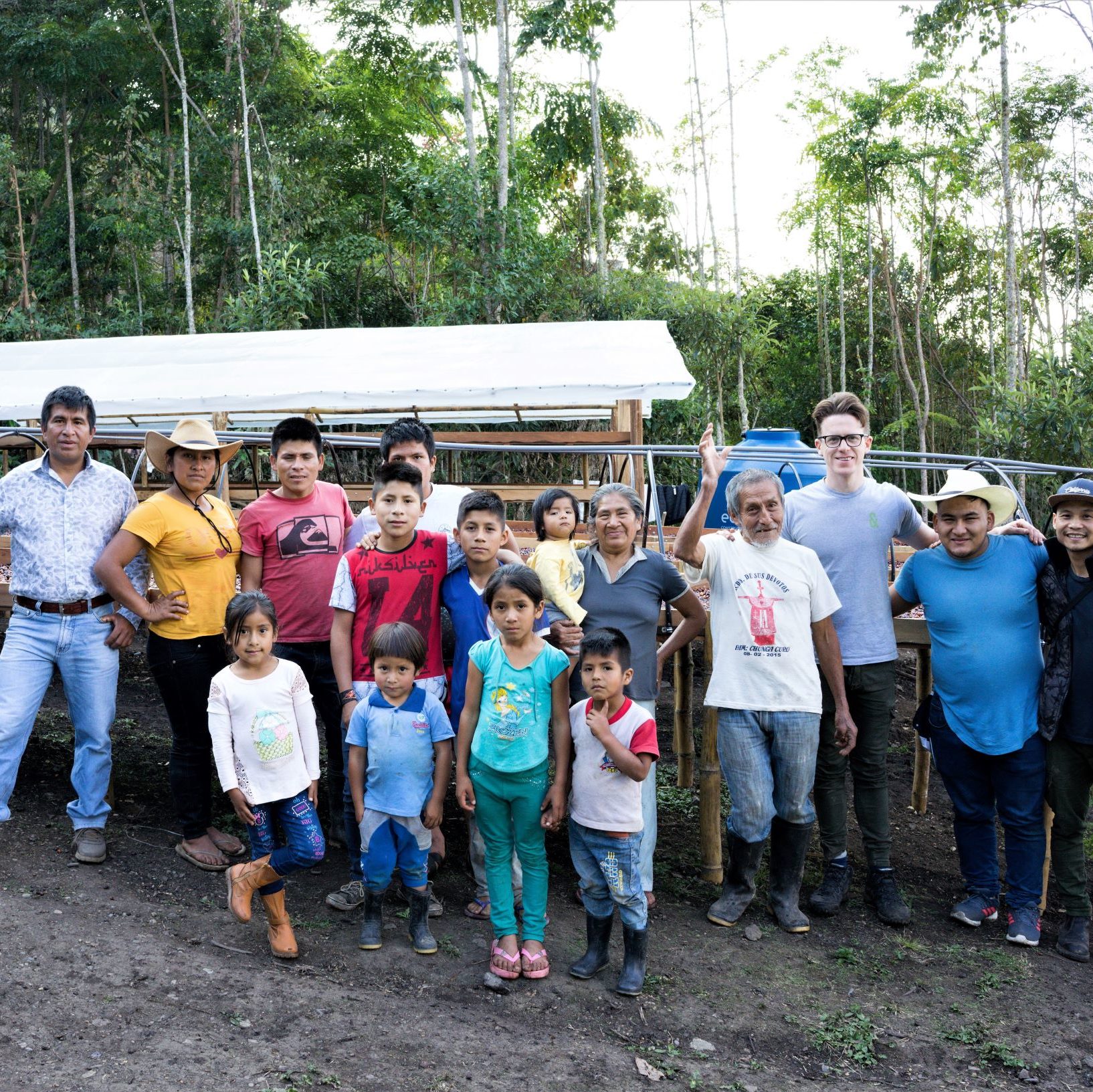
THE FAMILY
Jose Nolasco and his wife, Diana, live and work together with their family including Jose’s aged father and mother, earning the income needed to sustain their simple lifestyle from their annual coffee crop.
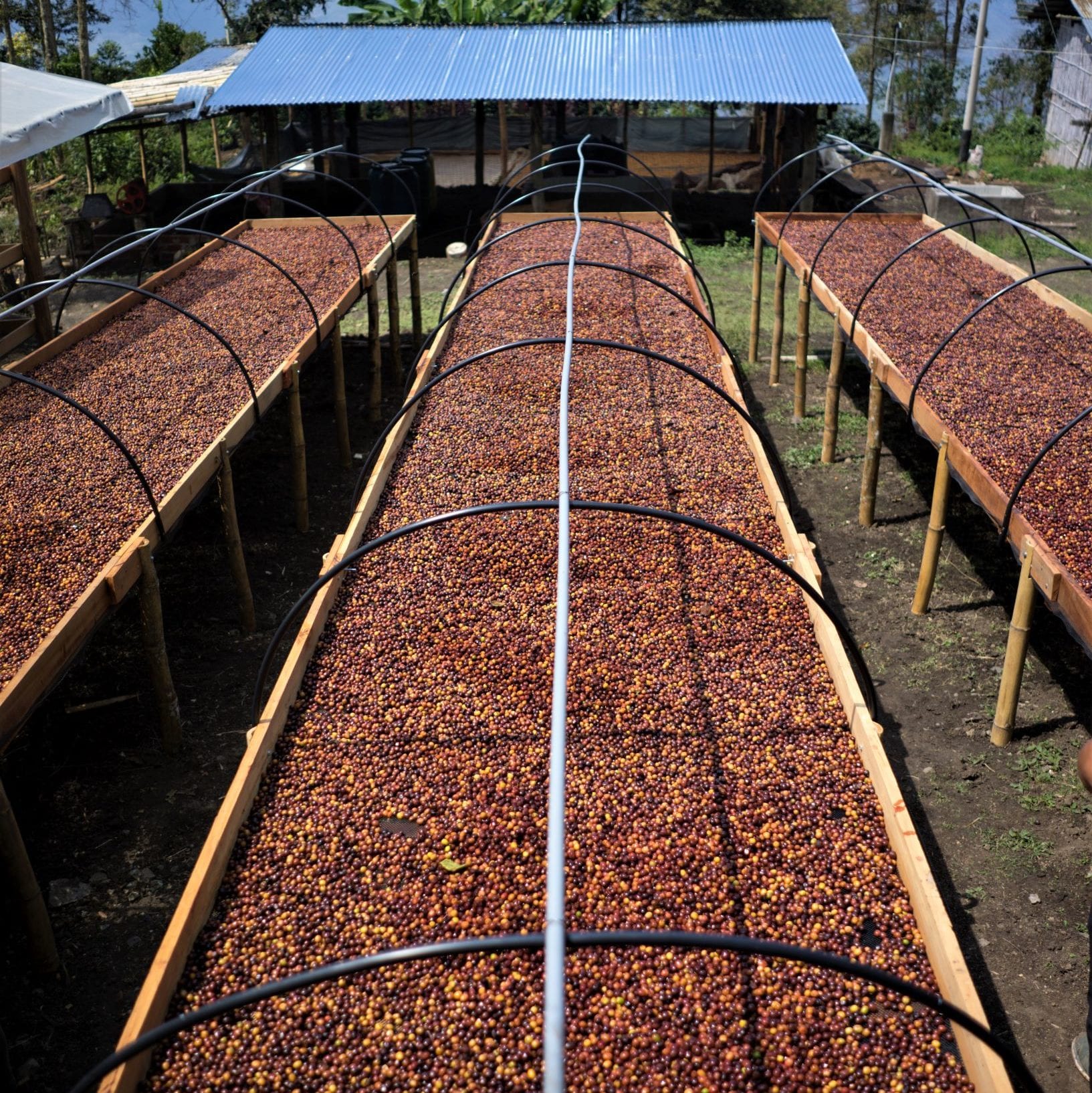
INVESTMENT
While the heart of our expedition lay in knowledge sharing and experimentation, Zest also donated some of the much needed equipment and infrastructure; including 130m2 of raised drying beds, 3 x fermentation tanks and BRIX, pH and temperature monitoring tools. This facilitated the coffee processing trials but would enhance the farm’s production capabilities for many years to come.
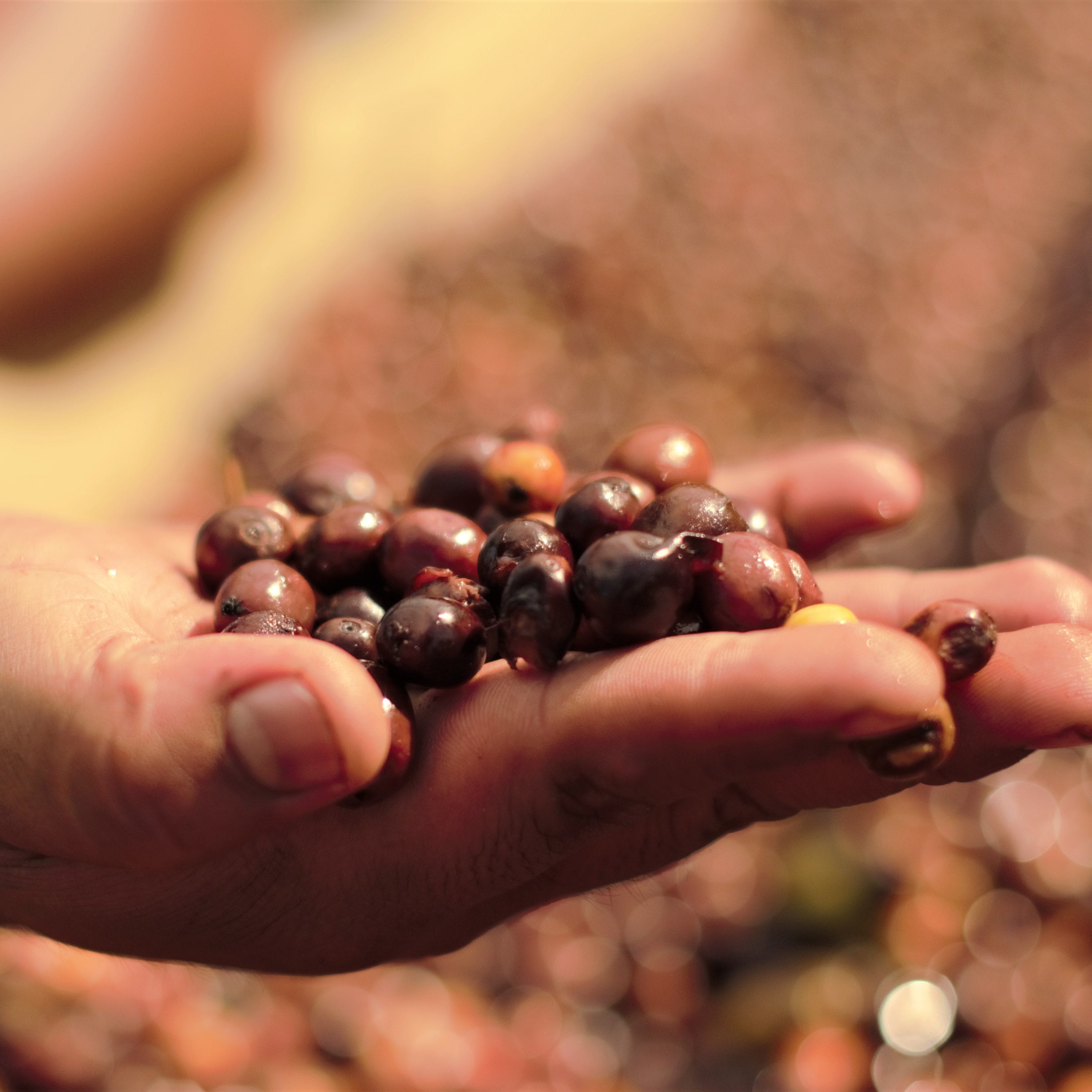
COFFEE PROCESSING
The life of every coffee bean starts as the seed inside the coffee cherry. The outer layer of the fruit is a thick skin with a fleshy, pulp layer underneath, and then the mucilage layer which provides for much of the coffee’s sweetness. Under this a papery layer called parchment. The removal of all these layers and the drying process is what we call coffee processing.
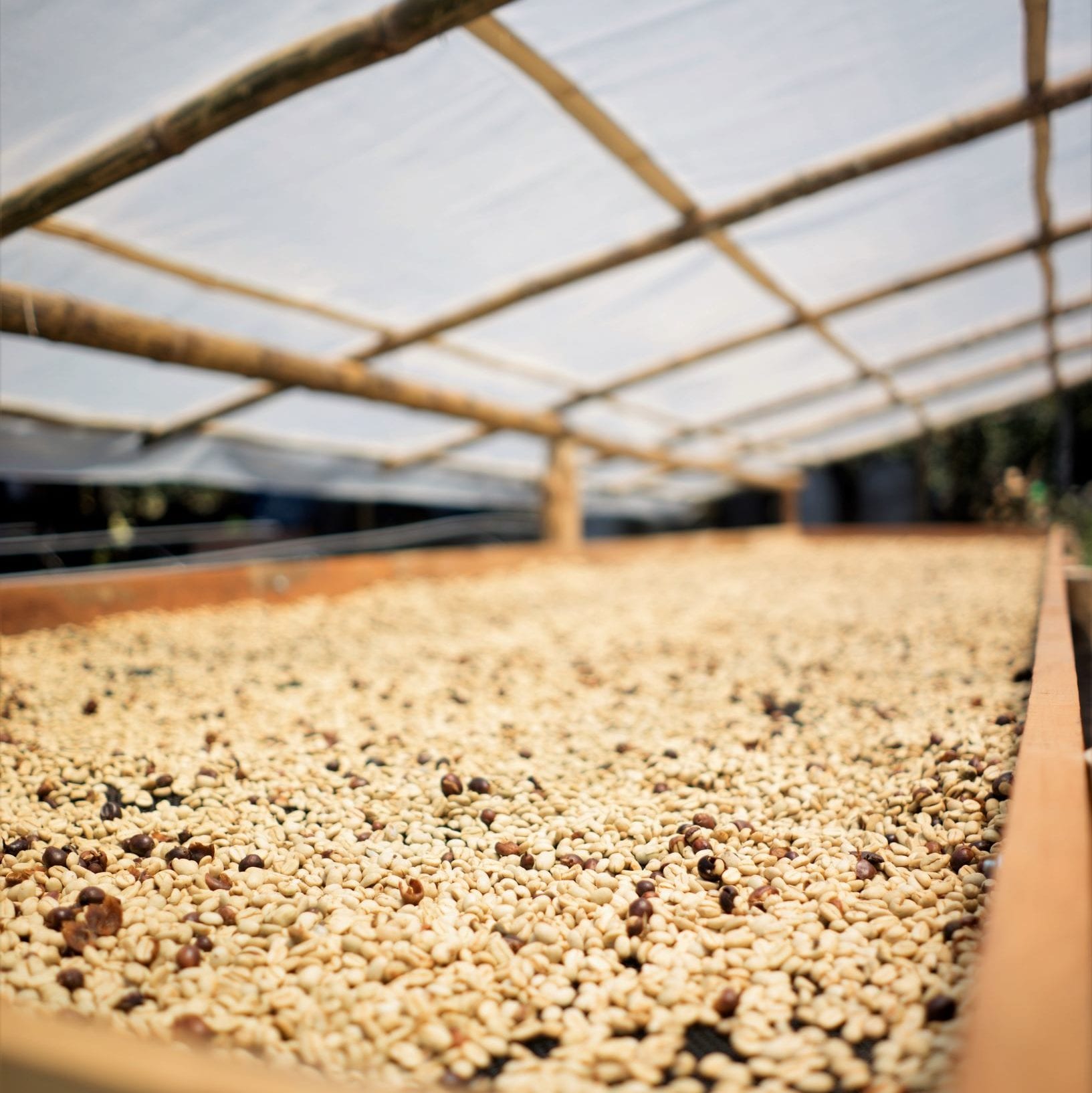
THE WASHED PROCESS
The cherries are de-pulped and the seeds placed into large open tanks and submerged with water. The microbes in the beans break down the mucilage over time, allowing for the sticky mucilage to be removed and the seeds washed multiple times. The beans are then typically placed on raised beds to dry to the appropriate moisture level. These coffee tend to have cleaner flavours, higher acidity, lighter body and more consistent cup profiles.
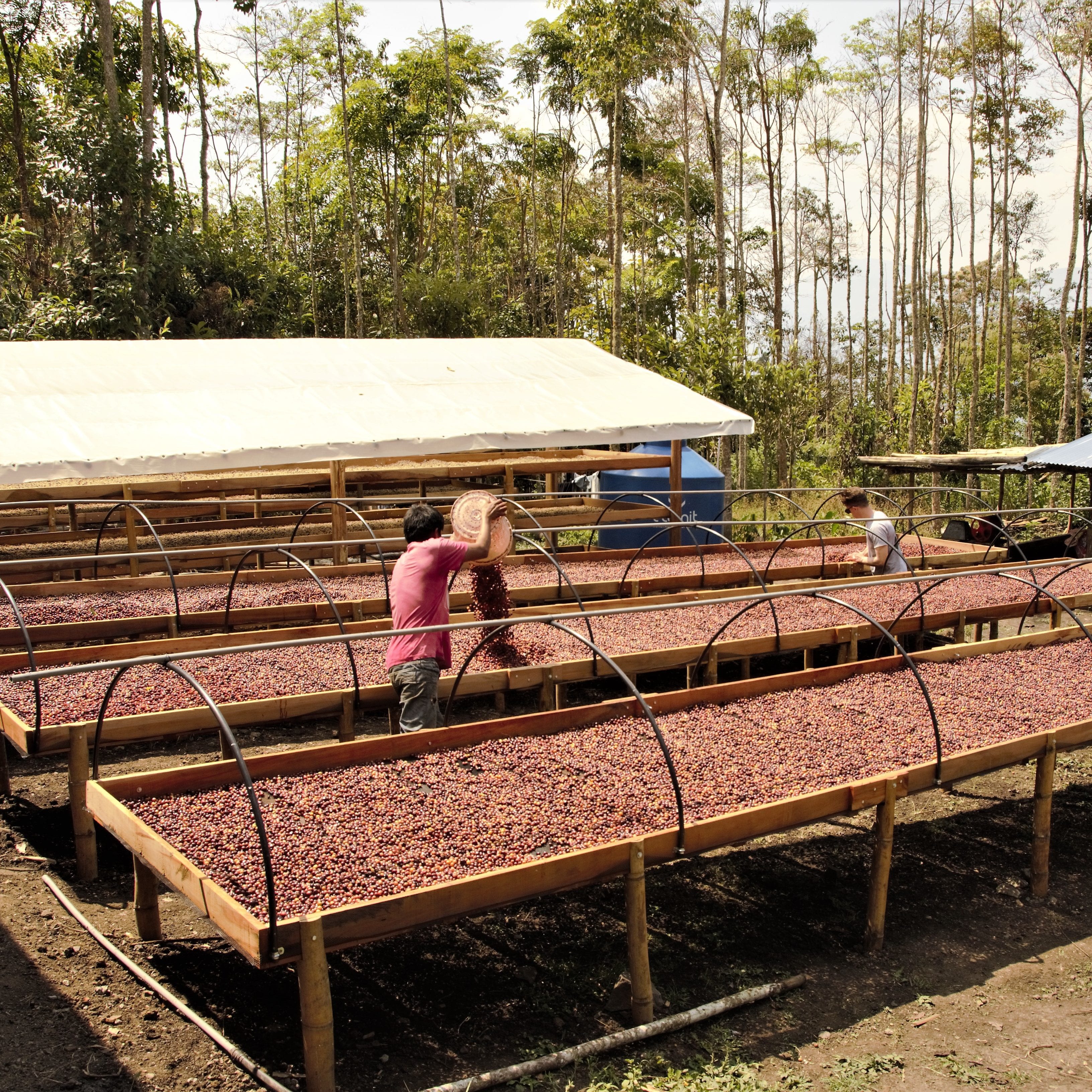
THE NATURAL PROCESS
The cherries are processed with the whole cherry intact. Natural coffee is dried on concrete patios or raised drying beds in the sun. The cherries are turned frequently throughout the day to avoid spoilage. Naturals typically take a number of weeks to dry to the required moisture levels before the dry skin is removed in a further hulling process. The resulting cup profile is typically full bodied with intense flavours of berry and ripe fruits.
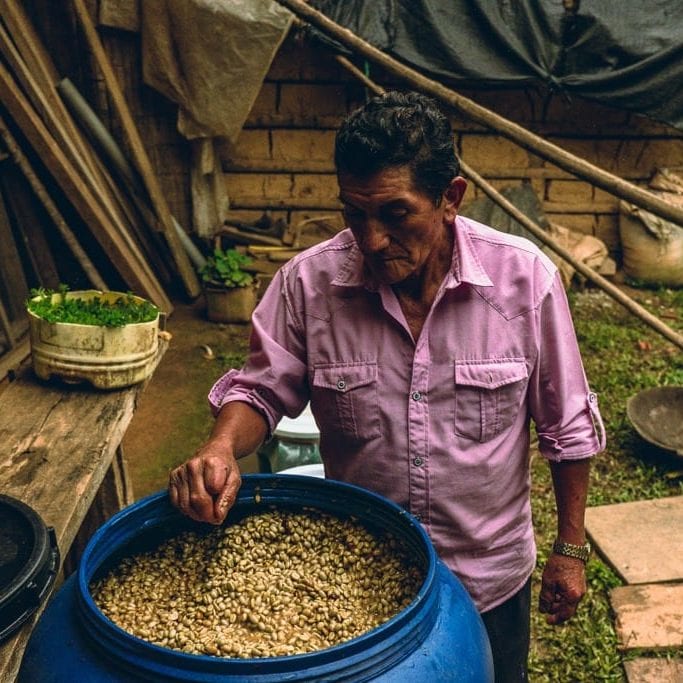
ANAEROBIC FERMENTATION
Fermentation is when the sugars and starches of the coffee cherry breakdown into acids or alcohol; and while this is a vital part of any process, anaerobic fermentation refers to a low oxygen environment in which the fermentation occurs. This allows us to ferment for longer and gives greater control over the flavour profile as only certain microbes and enzymes can survive in a low oxygen environment.
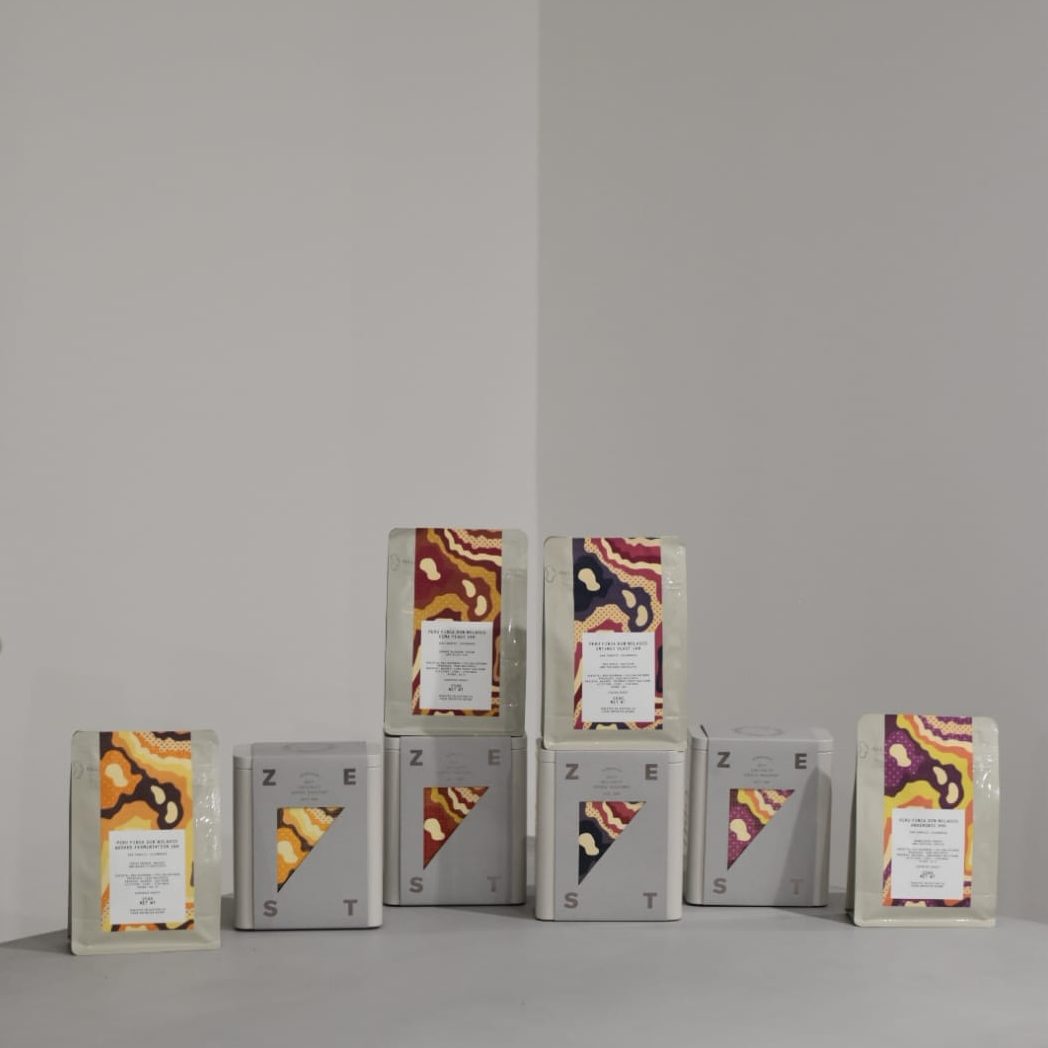
OUR MICROLOTS
While a true story of teamwork and innovation is always a rewarding one, the real value in our journey with Finca Don Nolasco lay in how we were able to improve the quality and sell price of their coffee.
LISTED BELOW ARE FOUR LOTS FROM THE FINCA DON NOLASCO. THIE FIRST IS THE STANDARD WASHED, 16 HR FERMENTATION COFFEE ALREADY BEING PRODUCED IN THAT AREA.
THE THREE OTHER IMPROVED LOTS ARE THE RESULTS OF OUR FERMENTATION EXPERIMENTS. BASED ON THE AVERAGE FARM GATE PRICES IN THE AREA, WE WERE ABLE TO DETERMINE AN INDICATIVE PRICE PERCENTAGE INCREASE OF EACH COFFEE BASED ON ITS CUP QUALITY SCORE.
Washed 16hr Fermentation
Score: 80.75
Price Increase: 0%
Washed 24hr CIMA Yeast fermentation
Score: 83.5
Price Increase: +15.7%
Washed 24hr INTENSO yeast Fermentation
Score: 85
Price Increase: +42.1%
Natural 90hr anaerobic Fermentation
Score: 87.5
Price Increase: +68.4%
DRAG RIGHT TO READ MORE >>
THE GOAL OF ZEST’S ORIGIN PROGRAM IS TO HELP BRING FINANCIAL VALUE TO FARMERS AND CO-OPERATIVES IN A SUSTAINABLE WAY THROUGH HANDS-ON EXPERIMENTATION AND KNOWLEDGE SHARING.
“Two hundred and fifty small one to two hectare farms make up the BVC. Each hectare contains around 4000 coffee trees, each producing about three kilograms of coffee cherry per year. After pulping, washing, drying, hulling and removing defects, the yield of each tree is just 400g of green coffee beans.
PROGRAM
Our aim is to demonstrate to farmers that it is possible to produce high scoring coffees using the same cherries that are normally sold as commodity grade coffee. We do this by focusing on alternative ways of processing. This significantly increases the value of small holder crops and makes their farming activity more financially rewarding and sustainable.
EXPLORING
During the project we worked hand in hand with the co-operative and the farmers. The energy and investment of all parties and the excitement and eagerness to explore new possibilities was inspiring.
PROcess
Our Microlot creation project was an interesting and strenuous process which began with selective picking based on ripeness and brix (sugar) levels. The cherries were then transported back to the rudimental processing area where they were placed in a water bath to float and remove and under-ripe or defective fruit. Some lots were then depulped using a manual crank-handle depulper while others were processed using the natural method.
FERMENTATION
The crucial fermentation step began by placing the unwashed beans into food grade tanks, sealing them and monitoring and logging pH, microbial activity, temperature and time. Lastly beans were spread out in a sun tent to dry in a controlled environment sheltered from moisture and temperature fluctuation yet exposed to the gentle drying rays of the sun.
RESULTS
It was with massive anticipation we awaited the samples from our experiments in Peru. When they last arrived, the team gathered to put them to the test. While some of lots were unremarkable we were thrilled to taste some truly amazing flavours from a number of the experiments.
Coffees that had been scoring in the low 80’s and were fetching a selling price of less than $5.00 per kilogram, were now scoring at an SCAA score of 87 and were worth over $20.00 per kilogram green. An amazing value-add for these farmers!
EL HIGO
Honey (meil) process
Low oxygen fermentation
Ferment Hours: 45
Score: 83.5
LA PALMA
Traditional washed process
Low oxygen fermentation
Ferment Hours: 45
Score: 84.5
EL NARANJO
Natural process
Low oxygen fermentation
Ferment Hours: 90
Score: 89
EL HUA YUCAN
Traditional washed process
Low oxygen fermentation
Ferment Hours: 45
Score: 84
EL CEDRO
Washed
Low oxygen fermentation with Cascara
Ferment Hours: 90
Score: 87
EL LAUREL
Washed process
Low oxygen fermentation
Ferment Hours: 90
Score: 85
DRAG RIGHT TO READ MORE >>
Project Raggiana is about creating flavour, building relationships and sharing the story of coffee and coffee people from the Wahgi Valley and the Sigri Estate in Papua New Guinea.
The project was our ticket to discovering PNG coffee and people, exploring the flavour implications of low-oxygen fermentation and capturing a story we could share with the folks back home.
The film
Our experience with the coffee and the coffee people was overwhelmingly beautiful and compelling and we captured most of it from the ground and the sky. The film was produced in cinematic style by the very talented Andrew Northover and is viewable in the link above.
Why Papua New Guinea?
PNG is that wild and untamed origin that has long been on our radar as being relatively unexplored in terms of coffee and storytelling. We, like many other roasters, felt that the potential for amazing, even game-changing coffee could be hidden somewhere amongst the rich biodiversity, highly phosphoric soils and old-world Jamaica blue mountain typica plants- all inherent to Highlands PNG.
The micro-lots
A major element of the project was to produce a range of micro-lots that explored the effects of a low-oxygen fermentation environment on flavour creation.
We produced 6 lots, all with different fermentation times – 45hr, 60hr, 65hr, 70hr and a 100 hr – plus we created a triple fermentation honey (meaning the coffee was first soaked as natural, pulped and fermented in an open-air environment and then washed and dried as a yellow honey).
SELECTIVE PICKING
5 of the micro-lots were created from selective pickings which focused on only the Typica variety and deep-red coloured cherry with an BRIX reading of around 18- 20%.
The 6th micro-lot was fermented with ‘normal cherry’ with a lower BRIX average. It will be interesting to taste the difference in quality between the two and discern the effects of higher sugar content on the fermentation process.
WHY MICROLOTS?
Micro-lots are a viable way to contribute to a sustainable coffee future. This is not necessarily due to the higher price farmers/producers receive from top scoring coffees but more so that micro-lots break down some of the social preconceptions around what coffee ‘is’ by enabling a deeper and richer conversation about quality and distinctive flavour.
WHAT WAS THE AIM?
We aim that our micro-lots and storytelling generate interest, appreciation, and appetite for Papua New Guinean coffee amongst consumers and cafes and contribute to other roasters and importers exploring the scope of Papua New Guinean coffee.
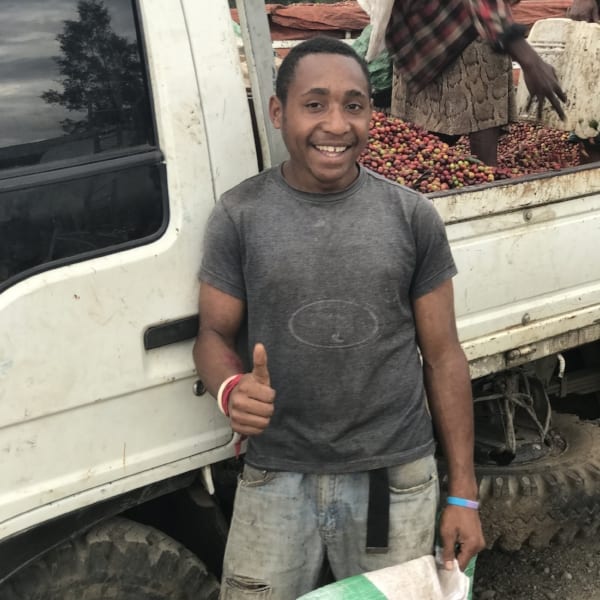
SOME THANKS
The project was made possible through a collaboration with Carpenters Products and the Sigri Estate with some special thanks needed for Sajith Shankar, the Sigri Estate manager, who made sure we felt welcomed in his home and provided us with generous hospitality. He was also responsible for showing our team the ins and outs of the Sigri Estate and explaining the historical context of PNG coffee production. And, last but not least, he cooked a really delicious Keralan curry.
We must also thank Alex, our security man who kept us safe, made sure that our mountains of camera and coffee gear weren’t subjected to opportunistic ‘findings’ and who explained tribal life, war and the art of the bow and arrow – “you’re not dead when you’re dead, you’re only dead when you’re finished”.
